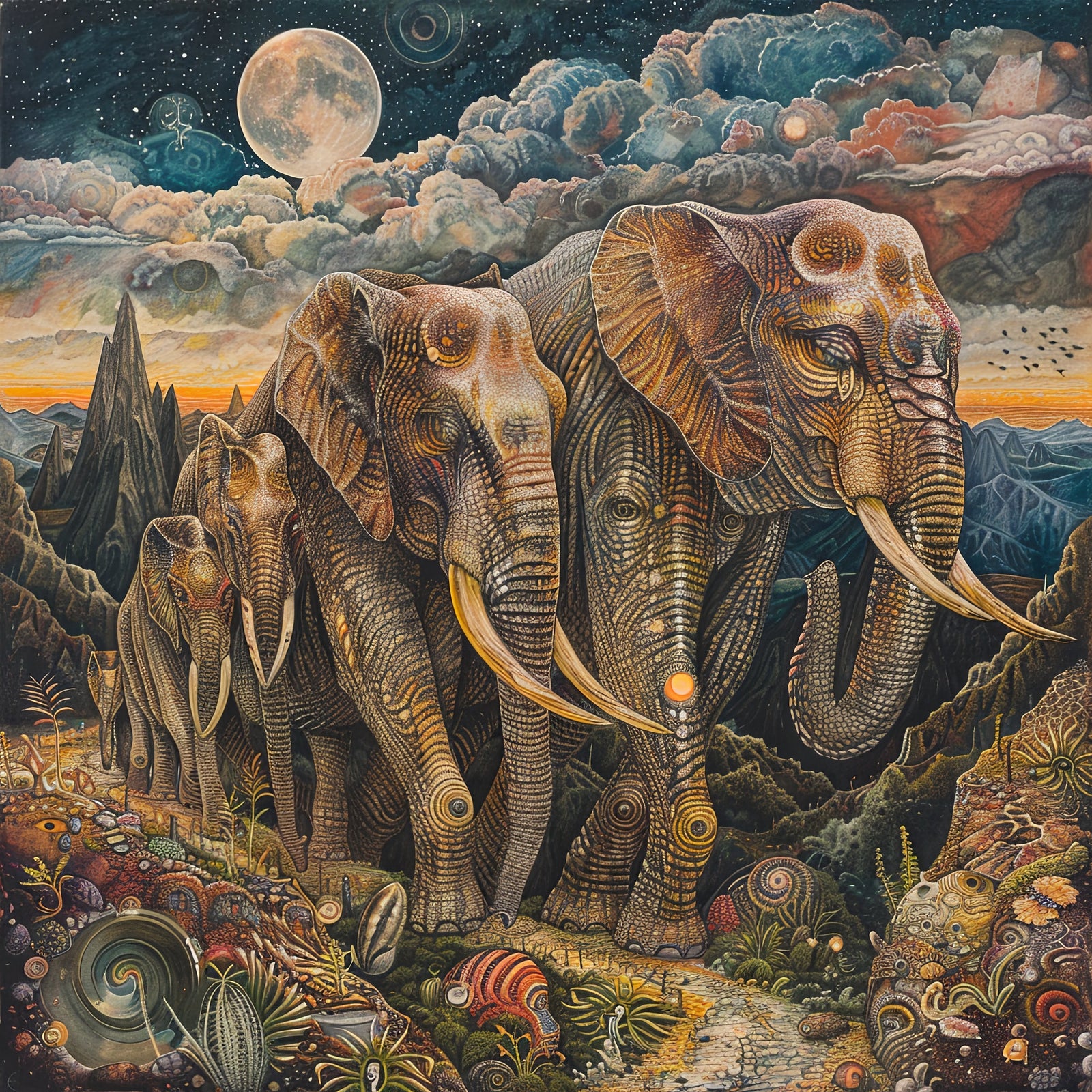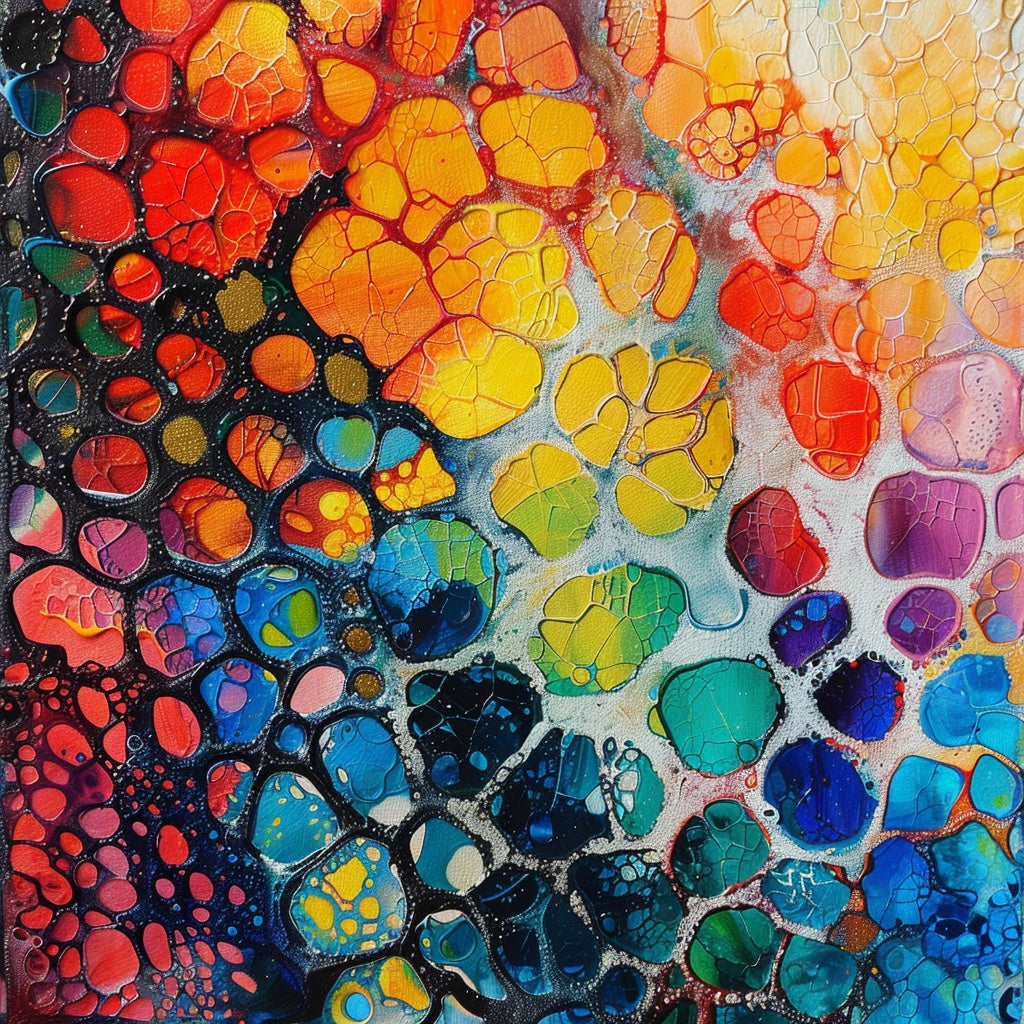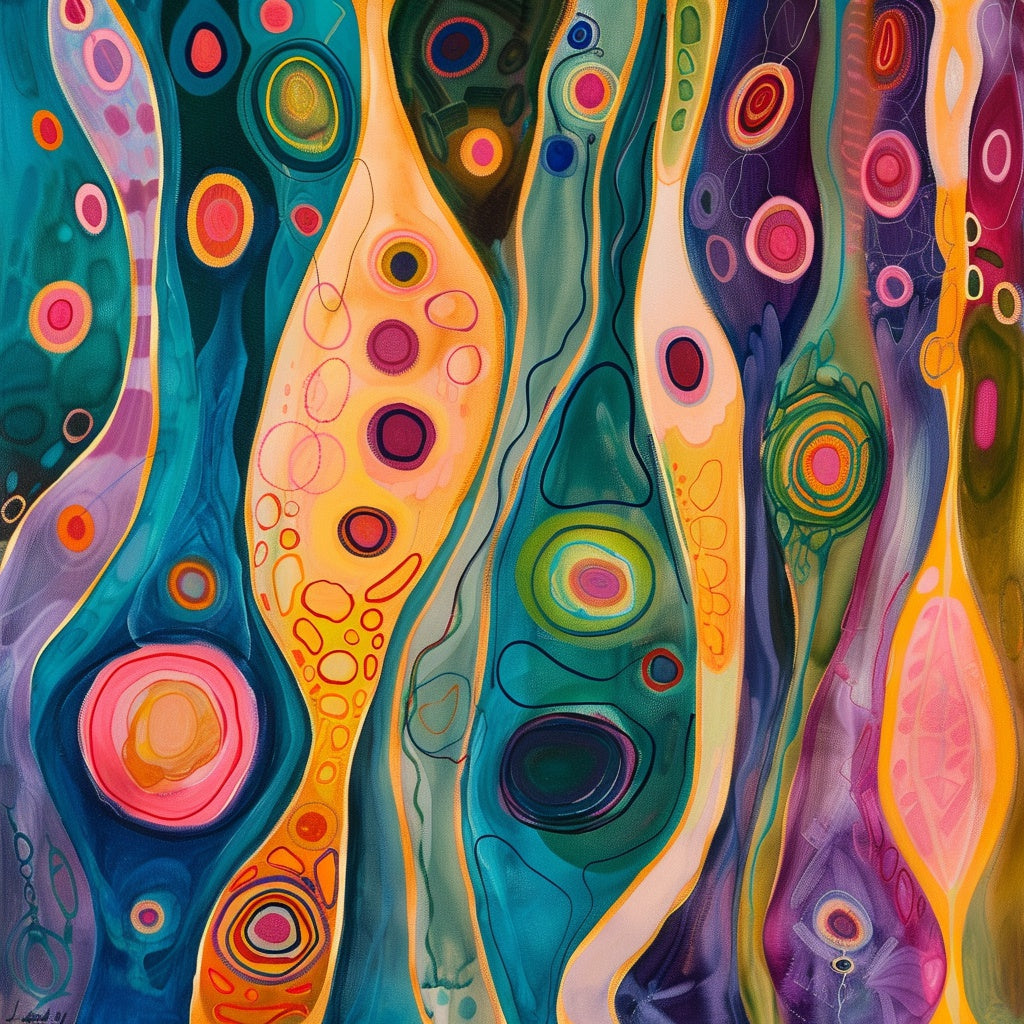The Art of the Prompt: How AI Interprets Your Words
The rise of AI art generators has democratized art creation, allowing anyone to conjure captivating visuals from simple text prompts. This article delves into the fascinating world of AI prompt interpretation, exploring the techniques used by different generators and the complex relationship between text and image in this new era of digital art.
Table of Contents
- Introduction
- How AI Art Generators Interpret Prompts
- Examples of Prompts and AI-Generated Art
- The Challenges of Prompt Interpretation
- The Future of AI Prompt Interpretation
- Conclusion
- Footnotes
Introduction
AI art generators like DALL-E, Midjourney, and Stable Diffusion have revolutionized digital art, enabling the creation of stunning visuals from simple text prompts. These tools have not only democratized art creation but have also sparked a new wave of creative exploration. Research indicates that these generators can significantly enhance human creative productivity, offering new avenues for artistic expression. This article will explore the fascinating world of AI prompt interpretation, examining how these systems transform our words into images.
How AI Art Generators Interpret Prompts
The Role of Prompts in AI Art Generation
In the realm of AI art generation, prompts are the fundamental building blocks. They are the initial instructions that guide the AI model in its creative process, shaping the final artwork. Prompts can range from concise phrases to elaborate descriptions, or even a single word or emoji. The selection of a prompt plays a vital role in determining the style, subject matter, and overall aesthetic of the generated image.
AI art generators utilize advanced algorithms to interpret prompts, blending randomness, precision, and creativity. They can emulate existing art styles or create entirely new aesthetics, all while adhering to the creative direction set by the prompt. Prompt engineering, the practice of crafting effective prompts, is an iterative and experimental process. It involves a dynamic interplay between humans and AI, where users refine their prompts based on the AI's interpretations and outputs. Interestingly, effective prompt engineering requires an understanding of how others would describe and react to the desired output, highlighting the social dimension of this creative skill.
Techniques Used by Different AI Art Generators
While the basic principle of using prompts remains consistent across various AI art generators, the specific techniques employed to interpret and process these prompts differ significantly. Many AI art generators use **Generative Adversarial Networks (GANs)** or **diffusion models** in their image generation process.
- GANs consist of two neural networks: a generator that creates images and a discriminator that evaluates them. The generator learns to create images that can fool the discriminator, leading to increasingly realistic and convincing results.
- Diffusion models transform noise into data through an iterative process. These models gradually add noise to an image until it becomes pure noise, and then train the AI to reverse this process and reconstruct the image from the noise.
Let's explore how some leading AI art generators approach prompt interpretation:
DALL-E
DALL-E, developed by OpenAI, is known for its ability to generate high-quality images from detailed text descriptions. DALL-E 2 can modify existing images, create variations of images that maintain their salient features, and interpolate between two input images. DALL-E 3, the latest iteration, utilizes a technique called **"synthetic captioning"** to enhance prompt accuracy. Unlike previous models, DALL-E 3's captions describe the main subject in detail while also accounting for context, relationships between objects, and background elements.
For instance, if you provide the prompt "a cat sitting on a windowsill," DALL-E 3 would not only depict the cat but also the wooden texture of the windowsill, the lighting in the room, and other contextual details, creating a richer and more accurate visual. This is like a skilled artist not just painting the subject but also carefully considering how the light falls and how the environment contributes to the overall scene.
Midjourney
Midjourney is known for creating visually stunning and artistically composed images. It interprets prompts holistically, considering the overall meaning and aesthetic rather than just individual keywords. It is like a conductor of an orchestra, taking all the separate instruments and bringing them together into a beautiful symphony.
Midjourney also supports a variety of parameters that can be used to fine-tune the generated images. These parameters allow users to control aspects like aspect ratio, chaos, quality, and stylization. Here's a table summarizing these parameters:
| Parameter | Description |
|---|---|
| --ar | Changes the aspect ratio of the image (e.g., --ar 16:9 for widescreen). |
| --c | Sets the chaos value, determining how much Midjourney varies the prompt (higher values lead to more unusual results). |
| --q | Defines the quality of the image (higher values use more processing time). |
| --seed | Sets a seed number for reproducibility (using the same seed with the same prompt will produce similar images). |
| --stylize or --s | Influences the strength of Midjourney's artistic style (higher values create more abstract interpretations). |
| --v or --version | Allows access to earlier Midjourney models (v1-v3). |
| --tile | Generates images that can be used as repeating tiles. |
Stable Diffusion
Stable Diffusion uses **"latent diffusion"** to generate images from text prompts. Like diffusion models, this involves adding noise to an image until it becomes pure noise, and then training the AI to reverse this process. Stable Diffusion also utilizes a pre-trained **CLIP (Contrastive Language-Image Pre-training) model** to link textual semantics with their visual representations. CLIP is trained on a massive dataset of images and captions, learning to identify the relationships between words and images.
This allows Stable Diffusion to generate images that accurately reflect the semantic meaning of the prompt. For example, if you provide the prompt "a futuristic cityscape with flying cars," Stable Diffusion would leverage CLIP's understanding of these concepts to create an image that matches the description. It's as if the AI has a vast library of images and their associated descriptions and can understand the connections between them to create something new.
Examples of Prompts and AI-Generated Art
To better understand the relationship between prompts and AI-generated art, let's examine some examples:
Example 1: Futuristic Cityscape
Prompt: "Generate a cityscape image featuring a bustling, futuristic metropolis with towering skyscrapers with unique, intricate designs. Capture a vibrant, high-tech urban environment with holographic billboards lighting the city skyline and the streets below."
AI-Generated Art: (Imagine a visually stunning image of a futuristic city with towering skyscrapers, flying vehicles, and holographic advertisements, as described in the prompt.)
This shows how the AI can take a descriptive prompt and create a complex scene based on the details.
Example 2: Mysterious Forest
Prompt: "Generate an image of a deep, dark forest with ancient, towering trees. Capture the mysterious atmosphere with twisted branches casting eerie shadows on the forest floor. Evoke a sense of solitude and intrigue."
AI-Generated Art: (Imagine a dark and atmospheric forest scene with towering trees, dense foliage, and a sense of mystery, as described in the prompt.)
This shows how the AI can capture a specific mood and atmosphere from a prompt.
Example 3: Whimsical Star
Prompt: "A 3D model of a bright star in pastel colors with a whimsical appearance."
AI-Generated Art: (Imagine a 3D rendering of a star with soft, pastel colors and a whimsical, dreamlike quality.)
This shows how the AI can interpret instructions for a specific type of model and style.
These examples illustrate how AI art generators can translate textual descriptions into diverse visual representations.
The Challenges of Prompt Interpretation
While AI art generators have made remarkable progress in interpreting prompts, they still encounter limitations. Some of the key challenges include:
Ambiguity
Human language is inherently ambiguous, and AI models can struggle to interpret words and phrases that have multiple meanings or depend on context. For example, the prompt "a bright star" could be interpreted as a celestial body or a celebrity. AI systems often employ **probabilistic models** and **contextual analysis** to handle ambiguity.
- Probabilistic models calculate the likelihood of different interpretations. It's like the AI is weighing the different options, determining which one is the most probable.
- Contextual analysis considers the surrounding words and phrases to determine the intended meaning. It's like the AI is looking at the bigger picture, trying to understand how each word contributes to the overall message.
Imagine asking a friend to "meet me by the bank". Do you mean a financial institution or the side of a river? Context will make this clear, but the same clarity isn't always present in the prompt.
Bias
AI models are trained on massive datasets, which may contain biases that are reflected in the generated images. This can lead to AI art that perpetuates stereotypes or reinforces harmful social norms. For example, an AI model trained on a dataset with predominantly male CEOs might generate images of CEOs that are mostly male, even though women also hold CEO positions. Similarly, biases related to race, age, and other social categories can also manifest in AI-generated images.
This is like a painter who is only familiar with one style of painting, and therefore, all of their art ends up looking the same. The AI is limited by the data it has been trained on, which can lead to biased outputs.
Lack of Contextual Understanding
AI models often lack the ability to fully understand the context and nuances of a prompt. They may misinterpret metaphors, sarcasm, or cultural references, leading to unexpected or inaccurate results. For example, the prompt "a painting of a broken heart" might be interpreted literally, resulting in an image of a physically damaged heart rather than a representation of emotional pain.
This limitation stems from the fact that AI models primarily learn from data and lack the real-world experiences and common sense knowledge that humans possess. It is like trying to understand a joke without knowing the cultural context – you might get the words, but you will miss the humor and emotional core.
The Future of AI Prompt Interpretation
Despite these challenges, the future of AI prompt interpretation is brimming with potential. Researchers are continuously striving to improve the accuracy and creativity of AI art generators. Some potential areas of improvement include:
Enhanced Contextual Understanding
AI models could be trained on more diverse and nuanced datasets, allowing them to better understand the context and subtleties of human language. This could involve incorporating information from knowledge graphs, common sense reasoning, and even emotional analysis. It's like giving the AI a much richer and more diverse education, allowing it to understand the nuances of language and culture.
Improved Bias Mitigation
Researchers are developing techniques to identify and mitigate biases in AI models. This could involve using more balanced datasets, incorporating fairness constraints into the training process, and developing tools to audit AI-generated content for potential biases. It's like ensuring that the AI is taught to treat all people equally, regardless of their background.
Increased User Control
Future AI art generators might offer users more control over the image generation process. This could involve allowing users to specify the desired level of detail, provide feedback on intermediate results, or even interactively guide the AI model towards the desired outcome. It's like giving the artist more control over the AI's creative process, allowing them to shape the final result to their liking.
Conclusion
AI art generators have revolutionized the way we create and interact with art. While the technology is still evolving, the ability of these tools to transform text prompts into stunning visuals is undeniable. By understanding how AI art generators interpret prompts, we can better appreciate the capabilities and limitations of this technology and harness its potential to unlock new forms of creative expression. As AI continues to advance, we can expect even more sophisticated and nuanced interpretations of prompts, leading to AI art that is more accurate, creative, and aligned with our artistic visions. The future of AI art is bright, and the possibilities are endless.
However, it's crucial to acknowledge that AI, despite its creative potential, lacks the human essence and emotions that give art depth and meaning. AI art generators, while powerful tools, are ultimately extensions of human creativity, not replacements for it. The concept of "generative synesthesia" aptly captures this collaborative relationship between humans and AI in art creation, where human ideation and expression combine with AI's ability to generate novel visual forms.
The future of AI art lies in a harmonious blend of human creativity and machine intelligence. As AI technology continues to evolve, we can anticipate a future where AI art generators become even more sophisticated and integrated into the artistic process, enabling new forms of expression and pushing the boundaries of creative exploration.
Footnotes
The Art of Prompt Engineering: BU Researchers Explore How Generative AI Impacts Human Creativity in Artistic Communities
Mastering AI Art Prompts: An In-depth Guide to Effective and Creative Prompting
Generative artificial intelligence, human creativity, and art | PNAS Nexus - Oxford Academic
Eyes can tell: Assessment of implicit attitudes toward AI art - PMC
How DALL-E 2 Actually Works - AssemblyAI
DALL-E 3 - Learn Prompting
Master Midjourney: AI Image Prompting Guide
Midjourney Prompts
Understanding Prompt in Depth - ComfyUI - Stable Diffusion - Topview.ai
Everything You Need To Know About Stable Diffusion - Hyperstack
Top 25 AI Art Prompt Ideas to Spark Your Creativity - ClickUp
60+ Best Prompts for AI Art (Templates + Prompt Ideas) - Mockey
Are AI Models Smart or Dumb? The Power and Limitations of Prompts - Deepak Gupta
Resolving Ambiguities in Text-to-Image Generative Models - Amazon Science
How Does AI Handle Ambiguity, and What Does This Say About Its 'Psychological' State? | by Brecht Corbeel | Medium
Shedding light on AI bias with real world examples - IBM
What Is AI-Generated Art? | IxDF - The Interaction Design Foundation
Future Trends: AI and the Next Decade of Visual Arts - Transforming Creativity and Artistic Expression - PRO EDU
AI & Photoshop - Artificial Intelligence: How AI is Changing Art - Aela Design
50 arguments against the use of AI in creative fields - Aoki Studio
```



Leave a comment (all fields required)